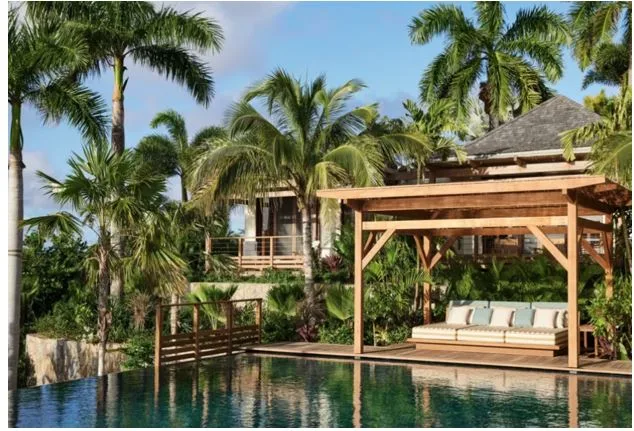Wrecked Motorcycles for Sale: How to Build a Budget Café Racer With Salvage Parts
The café racer movement began in 1960s Britain, when riders stripped weight from inexpensive street bikes to chase speed between roadside cafés. Today those sleek lines and crouched silhouettes still turn heads, but factory-built neo-retro models can cost as much as a new car. Enter online listings that advertise wrecked motorcycles for sale. Many of these bikes run fine or need modest work, yet they sell at a fraction of showroom prices because fairings are scuffed or forks are slightly tweaked. With clear planning and the right tools, a totaled sport-bike or standard can become your personalized café project for far less than buying new. This guide lays out each step, from choosing the right donor to clearing paperwork, so you can ride a head-turning custom without emptying your wallet.
Choose the Right Donor Bike
Focus on Frame Integrity First
A café racer’s signature look depends on a straight backbone and clean triangle under the seat. When browsing salvage sites, zoom in on photos of the steering-head gussets and swing-arm pivots. Avoid any donor that shows cracks, weld separation, or severe rust near those points. Minor rash on engine covers or a bent brake pedal is fine; a twisted main spar is not.
Pick an Engine Size That Matches Your Goals
- 300-400 cc singles and twins build lightweight commuters perfect for city hops.
- 600-750 cc inline fours or triples balance highway speed and manageable insurance rates.
- 900 cc plus twins and fours deliver effortless torque but cost more in chains, tires, and fuel.
For first-time builders, mid-displacement engines around 500-650 cc provide plenty of punch without the weight and heat of liter-class machines.
Avoid Electronic Nightmares
Late-model superbikes pack ride-by-wire throttles, inertial measurement units, and cornering ABS. Those features raise the salvage value but complicate custom wiring. A ten-year-old standard with EFI and a basic ECU makes life easier when you relocate the battery or switch to LED lighting.
Inspect Listings Like a Shop Owner
- Fork Direction and Angle – Look for subtle bends by comparing fork tubes in dead-on photos.
- Wheel Centering – A rear wheel offset to one side can indicate a bent swingarm.
- Engine Case Damage – Deep gouges near oil passages may require welding or replacement.
- Odometer Shot – Verify mileage against the VIN check; low-mileage motors last longer after the rebuild.
- Missing Key – Modern immobilizer chips cost hundreds to replace; budget accordingly.
If the bike is within driving distance, visit the yard with a flashlight, magnet, and small mirror. Spin each wheel for flat spots and check the head bearings for notchiness.
Build a Real-World Budget
| Cost Item | Typical Range (USD) |
| Winning bid and auction fees | 800 – 2 500 |
| Transport to your garage | 100 – 400 (open trailer) |
| Fork tubes or front-end swap | 120 – 350 (used) |
| Clip-on handlebars and rear-sets | 150 – 300 |
| Seat hoop and upholstery | 180 – 350 |
| LED headlight, signals, wiring | 120 – 250 |
| Paint or powder coat | 200 – 600 |
| Fluids, filters, consumables | 100 – 180 |
| Title inspection and tags | 75 – 150 |
Add a 15 percent reserve for unplanned parts, and keep receipts in a folder; most DMVs require proof of legal sourcing for major components.
Café Conversion Steps
1. Strip to the Bare Essentials
Remove broken plastics, high handlebars, bulky airbox covers, and passenger brackets. Photograph wiring routes before unplugging connectors.
2. Address Safety and Mechanics First
- Replace bent forks or triple clamps.
- Service bearings, seals, and brake lines.
- Install fresh tires and true the wheels.
3. Weld or Bolt a Seat Hoop
A short, upswept hoop defines café lines and supports the cowl. If you do not weld, many vendors sell bolt-on kits with slotted braces that clamp to the frame.
4. Relocate the Electronics
Mount the battery under the seat cowl or inside a fabricated tray beneath the engine to clear the visual space between the tank and tire.
5. Fit Clip-Ons and Rear-Sets
Drop the riding position for that classic racer crouch. Verify full steering lock to lock without lever or tank interference.
6. Tame the Exhaust Note
A stainless two-into-one system saves weight and looks period-correct. Check local dB limits and retain a removable baffle to pass inspection.
7. Finish With Paint and Trim
Choose a retro color: British racing green, ivory, or deep burgundy, and complement with brushed-metal tank badges. Powder-coat the frame satin black for durability.
Paperwork and Insurance
Most states treat rebuilt motorcycles like cars:
- Provide before-and-after photos.
- Submit receipts for major parts such as forks and wheels.
- Pass a safety or anti-theft inspection.
- Pay rebuilt-title fees and register.
Liability policies are readily available; collision coverage varies by insurer and bike age. Present an appraisal if your finished build carries high aftermarket value.
Five Common Pitfalls and How to Avoid Them
- Underestimating Wheel Alignment Costs – Bent rims or swingarms add unexpected expense.
- Ignoring Charging-System Health – A weak stator strand fails after the first night ride.
- Skipping Frame Bracing – Removing subframe tabs without adding gussets can invite cracks.
- Choosing Oversized Carbs – Bigger is not always better on a street café; rideability suffers.
- Poor Heat Shielding – High rear-set exhaust routes cook wiring and rear master cylinders.
Real-World Example
Listing: 2012 parallel-twin 650, 18,000 miles, side slide, engine starts.
Bid + fees: 1150 dollars
Transport: 120 dollars
Parts: fork slider (180), clip-ons (90), rear-sets (160), hoop kit (210), LED lighting (130), fluids and tires (260), paint (350).
Inspection & tags: 95 dollars
Total outlay: 2495 dollars
Comparable clean-title café builds list online around 6500 dollars, leaving roughly 4000 in sweat-equity value and personal customization pride.
Final Ride-Ready Checklist
- Torque every fastener to spec.
- Verify brake-light activation from both levers.
- Check chain alignment and slack.
- Set tire pressures for solo weight distribution.
- Test ride at low speed, then re-inspect for leaks or loose clamps.
Complete these steps, and your rebuilt café racer will not only look the part but deliver reliable miles, proof that wrecked motorcycles for sale can still write new chapters on the open road instead of gathering dust behind an insurance fence.




